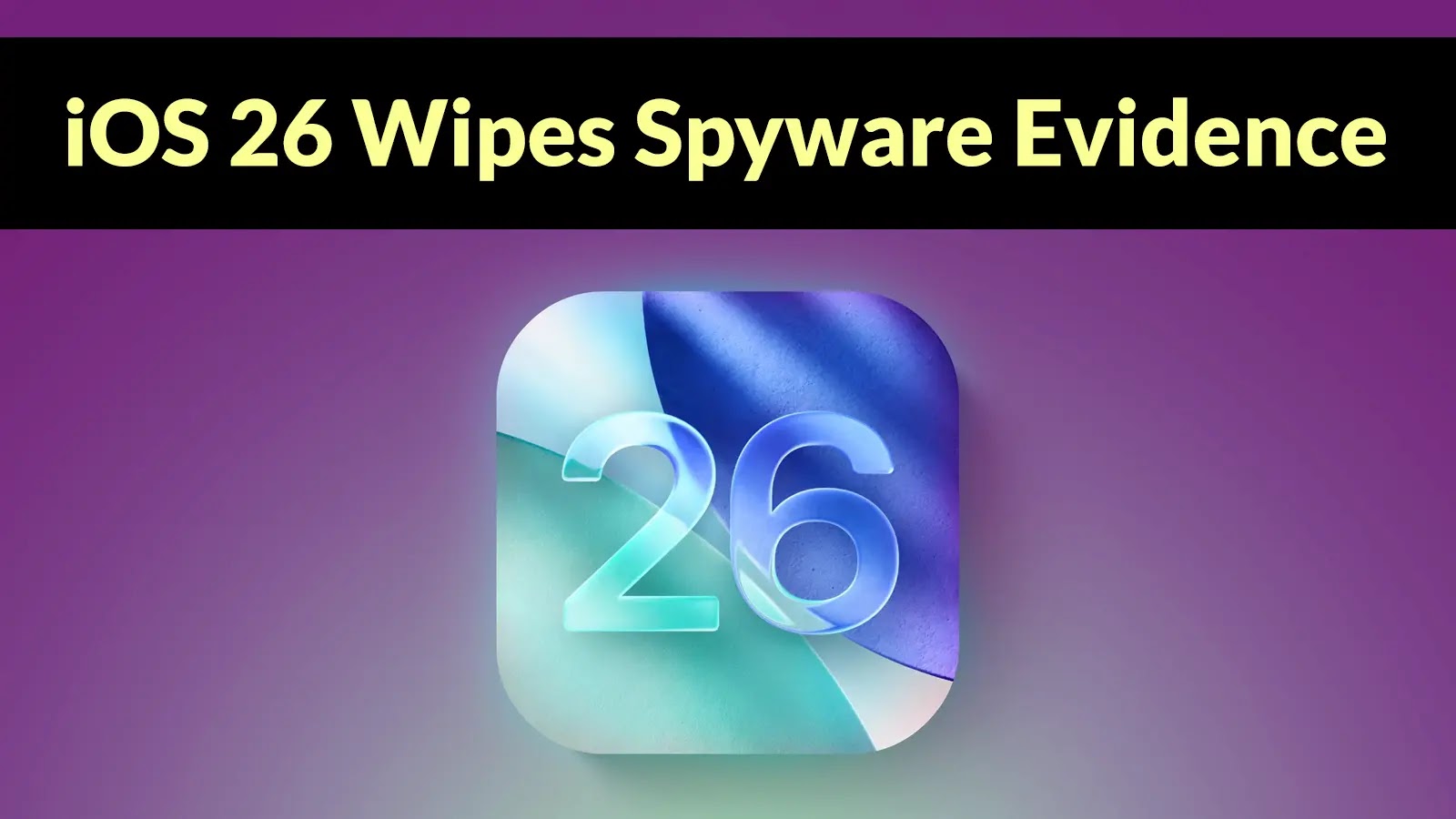
iOS 26 Deletes Pegasus and Predator Spyware Infection Evidence by Overwriting The ‘shutdown.log’ file on Reboot
Unmasking the Disappearance: iOS 26 and the Eradication of Spyware Forensics
The landscape of mobile device security has been irrevocably altered by the emergence of sophisticated surveillance tools like Pegasus and Predator spyware. These advanced malware strains, often deployed by nation-state actors, specialize in exploiting zero-click vulnerabilities, leaving high-profile individuals and at-risk communities acutely exposed. For years, critical forensic analysis has relied on the digital breadcrumbs left behind by such infections – artifacts that offered crucial insights into compromise vectors and adversary tactics. However, a significant development in iOS 26 threatens to undermine these very investigative capabilities: the system now overwrites the shutdown.log file on reboot, effectively deleting key evidence of Pegasus and Predator infections.
The Evolving Threat of Pegasus and Predator Spyware
Pegasus, developed by NSO Group, and Predator, from Cytrox, represent the pinnacle of mobile spyware capabilities. These tools are designed to operate silently and extensively, monitoring communications, accessing microphones and cameras, and exfiltrating sensitive data without any user interaction. Their deployment frequently targets journalists, human rights defenders, and political dissidents, making the ability to detect and investigate these intrusions paramount for protecting vulnerable populations. The relentless pursuit of zero-day exploits by these groups ensures a constant arms race between attackers and device security, with each new vulnerability potentially opening a new vector for compromise. For instance, past vulnerabilities like CVE-2021-30860 have highlighted the critical need for robust forensic analysis.
The Critical Role of shutdown.log in Forensic Investigations
Historically, the shutdown.log file on iOS devices has served as an invaluable resource for cybersecurity investigators. This system log contained timestamps and entries related to device operations, including unexpected reboots or system anomalies that could indicate a sophisticated attack. For Pegasus and Predator, which often employ kernel-level exploits and persistence mechanisms, unusual reboots or system crashes were sometimes the only discernible signs of an infection. Forensic experts could meticulously analyze these logs, correlating timestamps with other network activity or application behavior to reconstruct the sequence of events leading to a compromise. The integrity of this log file was therefore central to identifying whether a device had been targeted and successfully exploited by these potent spyware tools.
iOS 26’s Impact: Obfuscating Spyware Evidence
The introduction of iOS 26 brings a significant change to how the operating system handles the shutdown.log file. With this update, the file is now automatically overwritten upon every device reboot. While this might be presented as a measure to maintain system hygiene or improve performance, its direct consequence is the systemic destruction of critical forensic evidence. This change makes it exceedingly difficult, if not impossible, for investigators to determine if a device was infected with Pegasus, Predator, or similar sophisticated spyware by examining historical system behavior. The timing of this alteration, given the ongoing threat of such spyware, raises serious concerns within the cybersecurity community, suggesting a potential unintended consequence that inadvertently benefits threat actors by erasing their digital footprints.
Remediation Actions and Mitigating Forensic Gaps
- Implement Regular Device Backups: While not a perfect solution, regular, encrypted backups of iOS devices can capture older log files and system states before they are overwritten. This necessitates a proactive approach to data preservation.
- Utilize Mobile Endpoint Detection and Response (EDR) Solutions: Implement specialized mobile EDR solutions that continuously monitor device activity for anomalous behavior, network connections to known command-and-control (C2) servers for Pegasus/Predator, and application sandboxing violations.
- Educate High-Risk Individuals: Provide targeted training for individuals at high risk of spyware attacks (journalists, activists, government officials) on best security practices, including secure communication channels and timely software updates.
- Demand Transparency from Apple: Cybersecurity professionals and advocacy groups should press Apple for greater transparency regarding security logging practices and explore alternative mechanisms for preserving critical forensic artifacts.
- Monitor Network Traffic for Anomalies: While device-side evidence becomes scarcer, monitoring network traffic for suspicious C2 communications, unusual data exfiltration, or connections to known spyware infrastructure remains a vital detection method.
Tools for Detection and Mitigation
| Tool Name | Purpose | Link |
|---|---|---|
| Amnesty International’s MVT (Mobile Verification Toolkit) | Forensic tool for identifying traces of Pegasus and other spyware on iOS and Android devices. | https://github.com/mvt-project/mvt |
| Lookout Mobile Endpoint Security | Enterprise-grade mobile threat defense and EDR solution for detecting advanced mobile threats. | https://www.lookout.com/products/endpoint-security |
| Zimperium zIPS | Mobile Threat Defense (MTD) solution offering real-time, on-device protection against known and unknown threats. | https://www.zimperium.com/platform/ztp |
The Future of Mobile Spyware Forensics
The change introduced in iOS 26 marks a significant challenge for mobile forensics. While new security features often enhance user protection, the unintentional consequence of obscuring evidence of state-sponsored spyware necessitates a re-evaluation of current investigative methodologies. Cybersecurity researchers will now have to pivot towards more dynamic and real-time detection methods, relying less on historical log data and more on network analysis, application behavior monitoring, and hardware-level security features. The ongoing battle against Pegasus and Predator spyware demands that device manufacturers prioritize transparency and collaborate with the security community to ensure that critical forensic capabilities are not inadvertently eroded.





